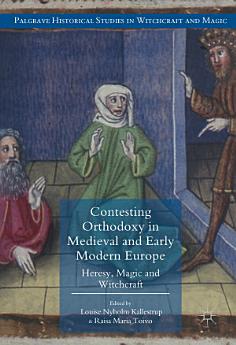Contesting Orthodoxy in Medieval and Early Modern Europe: Heresy, Magic and Witchcraft
Louise Nyholm Kallestrup · Raisa Maria Toivo
Feb 2017 · Springer
Ebook
349
Pages
reportRatings and reviews aren’t verified Learn More
About this ebook
This book breaks with three common scholarly barriers of periodization, discipline and geography in its exploration of the related themes of heresy, magic and witchcraft. It sets aside constructed chronological boundaries, and in doing so aims to achieve a clearer picture of what ‘went before’, as well as what ‘came after’. Thus the volume demonstrates continuity as well as change in the concepts and understandings of magic, heresy and witchcraft. In addition, the geographical pattern of similarities and diversities suggests a comparative approach, transcending confessional as well as national borders. Throughout the medieval and early modern period, the orthodoxy of the Christian Church was continuously contested. The challenge of heterodoxy, especially as expressed in various kinds of heresy, magic and witchcraft, was constantly present during the period 1200-1650. Neither contesters nor followers of orthodoxy were homogeneous groups or fractions. They themselves and their ideas changed from one century to the next, from region to region, even from city to city, but within a common framework of interpretation. This collection of essays focuses on this complex.
About the author
Louise Nyholm Kallestrup is Associate Professor in Early Modern History at the University of Southern Denmark. She has published widely on Danish and Italian witchcraft.
Raisa Maria Toivo is Senior Research Fellow at the University of Tampere, Finland. She has published widely on witchcraft, gender and the Reformation.
Rate this ebook
Tell us what you think.
Reading information
Smartphones and tablets
Install the Google Play Books app for Android and iPad/iPhone. It syncs automatically with your account and allows you to read online or offline wherever you are.
Laptops and computers
You can listen to audiobooks purchased on Google Play using your computer's web browser.
eReaders and other devices
To read on e-ink devices like Kobo eReaders, you'll need to download a file and transfer it to your device. Follow the detailed Help Center instructions to transfer the files to supported eReaders.





